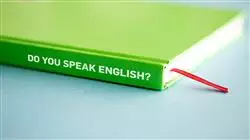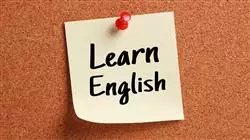University certificate
The world's largest faculty of education”
Introduction to the Program
Are you looking for a program that will give you the category of Postgraduate diploma in Clil/Aicle Methodology in the Pre-School and Primary School Classroom? You are in luck because you have before you the best option to get it 100% online"

The promotion of multiculturalism through the inclusion of English in Pre-school and Primary education environment has made it possible to create a teaching system based on linguistic immersion through the enhancement of this language in the common subjects (mathematics, science, plastic arts, physical education, etc.) Thanks to projects such as Clil/Aicle, children can work in a dynamic and specialized way in the mastery of the English language through an interactive and autonomous teaching system, focused on processes and tasks, not only on purely theoretical knowledge.
In order to enable teachers to work on improving their skills through the inclusion in their curricula of the most innovative teaching resources for bilingual teaching at different levels, TECH has developed this Postgraduate diploma, this way through a 100% online academic program, you will , have the opportunity to delve into the idiomatic principles of current teaching, focusing on the cultural and pedagogical dimensions that are enhanced through their use in today's school environment. But the bulk of the program focuses on a thorough knowledge of the Clil/Aicle project and its methodological tools, thanks to which you will be able to design projects and syllabuses based on the most effective didactic strategies for bilingual teaching. design projects and curricula based on the most effective teaching strategies for bilingual teaching. Finally, you will have access to a specific module dedicated to the different teaching resources that you can use in your classes to make them entertaining, fun and inclusive.
All this through 450 hours of diverse content which has been designed by a team specialized in the area following the guidelines of the Relearning methodology, to offer an academic experience in which the student will not have to invest extra hours in memorizing. In addition, the compatibility of the Virtual Campus where the material will be hosted with any device with internet connection , will allow you to access the program's course from wherever and whenever you want, giving you the possibility to design the educational calendar based on your total and absolute availability.
You will have access to a specific module in which you will work with the most innovative and effective teaching resources for the enhancement of the bilingual classroom"
The Postgraduate diploma in Clil/Aicle Methodology in the Pre-School and Primary School Classroom contains the most complete and up-to-date educational program on the market. The most important features include:
- Practical cases presented by experts in bilingual education
- The graphic, schematic and practical contents of the book provide technical and practical information on those disciplines that are essential for professional practice
- Practical exercises where self-assessment can be used to improve learning
- Its special emphasis on innovative methodologies
- Theoretical lessons, questions to the expert, debate forums on controversial topics, and individual reflection assignments
- Content that is accessible from any fixed or portable device with an Internet connection
Delving into the principles of bilingualism from the ground up to current pedagogical methodologies will give you a broad and detailed view of the techniques you can use in your environment"
The program’s teaching staff includes professionals from the sector who contribute their work experience to this educational program, as well as renowned specialists from leading societies and prestigious universities.
The multimedia content, developed with the latest educational technology, will provide the professional with situated and contextual learning, i.e., a simulated environment that will provide immersive education programmed to learn in real situations.
This program is designed around Problem-Based Learning, whereby the professional must try to solve the different professional practice situations that arise during the academic year For this purpose, the students will be assisted by an innovative interactive video system created by renowned and experienced experts.
The best program in the current educational market to establish coordinated guidelines between content and language through the Clil Curriculum and an experience of the highest level"

You will have unlimited access to a last generation Virtual Campus where you will find, in addition to the syllabus, hours of diverse and multidisciplinary additional material"
Why study at TECH?
TECH is the world’s largest online university. With an impressive catalog of more than 14,000 university programs available in 11 languages, it is positioned as a leader in employability, with a 99% job placement rate. In addition, it relies on an enormous faculty of more than 6,000 professors of the highest international renown.

Study at the world's largest online university and guarantee your professional success. The future starts at TECH”
The world’s best online university according to FORBES
The prestigious Forbes magazine, specialized in business and finance, has highlighted TECH as “the world's best online university” This is what they have recently stated in an article in their digital edition in which they echo the success story of this institution, “thanks to the academic offer it provides, the selection of its teaching staff, and an innovative learning method aimed at educating the professionals of the future”
A revolutionary study method, a cutting-edge faculty and a practical focus: the key to TECH's success.
The most complete study plans on the university scene
TECH offers the most complete study plans on the university scene, with syllabuses that cover fundamental concepts and, at the same time, the main scientific advances in their specific scientific areas. In addition, these programs are continuously being updated to guarantee students the academic vanguard and the most in-demand professional skills. In this way, the university's qualifications provide its graduates with a significant advantage to propel their careers to success.
TECH offers the most comprehensive and intensive study plans on the current university scene.
A world-class teaching staff
TECH's teaching staff is made up of more than 6,000 professors with the highest international recognition. Professors, researchers and top executives of multinational companies, including Isaiah Covington, performance coach of the Boston Celtics; Magda Romanska, principal investigator at Harvard MetaLAB; Ignacio Wistumba, chairman of the department of translational molecular pathology at MD Anderson Cancer Center; and D.W. Pine, creative director of TIME magazine, among others.
Internationally renowned experts, specialized in different branches of Health, Technology, Communication and Business, form part of the TECH faculty.
A unique learning method
TECH is the first university to use Relearning in all its programs. It is the best online learning methodology, accredited with international teaching quality certifications, provided by prestigious educational agencies. In addition, this disruptive educational model is complemented with the “Case Method”, thereby setting up a unique online teaching strategy. Innovative teaching resources are also implemented, including detailed videos, infographics and interactive summaries.
TECH combines Relearning and the Case Method in all its university programs to guarantee excellent theoretical and practical learning, studying whenever and wherever you want.
The world's largest online university
TECH is the world’s largest online university. We are the largest educational institution, with the best and widest online educational catalog, one hundred percent online and covering the vast majority of areas of knowledge. We offer a large selection of our own degrees and accredited online undergraduate and postgraduate degrees. In total, more than 14,000 university degrees, in eleven different languages, make us the largest educational largest in the world.
TECH has the world's most extensive catalog of academic and official programs, available in more than 11 languages.
Google Premier Partner
The American technology giant has awarded TECH the Google Google Premier Partner badge. This award, which is only available to 3% of the world's companies, highlights the efficient, flexible and tailored experience that this university provides to students. The recognition as a Google Premier Partner not only accredits the maximum rigor, performance and investment in TECH's digital infrastructures, but also places this university as one of the world's leading technology companies.
Google has positioned TECH in the top 3% of the world's most important technology companies by awarding it its Google Premier Partner badge.
The official online university of the NBA
TECH is the official online university of the NBA. Thanks to our agreement with the biggest league in basketball, we offer our students exclusive university programs, as well as a wide variety of educational resources focused on the business of the league and other areas of the sports industry. Each program is made up of a uniquely designed syllabus and features exceptional guest hosts: professionals with a distinguished sports background who will offer their expertise on the most relevant topics.
TECH has been selected by the NBA, the world's top basketball league, as its official online university.
The top-rated university by its students
Students have positioned TECH as the world's top-rated university on the main review websites, with a highest rating of 4.9 out of 5, obtained from more than 1,000 reviews. These results consolidate TECH as the benchmark university institution at an international level, reflecting the excellence and positive impact of its educational model.” reflecting the excellence and positive impact of its educational model.”
TECH is the world’s top-rated university by its students.
Leaders in employability
TECH has managed to become the leading university in employability. 99% of its students obtain jobs in the academic field they have studied, within one year of completing any of the university's programs. A similar number achieve immediate career enhancement. All this thanks to a study methodology that bases its effectiveness on the acquisition of practical skills, which are absolutely necessary for professional development.
99% of TECH graduates find a job within a year of completing their studies.
Postgraduate Diploma in Clil/Aicle Methodology in the Kindergarten and Elementary School Classroom
(Postgraduate Diploma in Clil/Aicle Methodology in the Kindergarten and Elementary School Classroom).
Prepare your students for a globalized world full of opportunities with our exciting Postgraduate Diploma in Clil/Aicle Methodology in the Kindergarten and Elementary School Classroom, offered by TECH Global University. In an increasingly interconnected world, it is essential that students develop linguistic and cognitive skills that allow them to communicate and understand concepts in more than one language. With our specialized program, you will learn how to implement CLIL/CLIL (Content and Language Integrated Learning) methodology in the classroom, enriching your students' educational experience.
Start your professional path by joining the best university in the world
This program is delivered online, which means that you can access the materials and participate in the activities from anywhere and at any time. At TECH Global University, we believe in flexibility and quality in online education, giving you the tools and support you need to take your education to the next level. By enrolling in the Postgraduate Diploma in Clil/Aicle Methodology in the Kindergarten and Elementary School Classroom, you will gain the skills and knowledge necessary to design and present academic content in a second language, while encouraging active student learning and participation. One of the most exciting benefits of this program is its ability to prepare your students for a global future. The CLIL methodology not only improves their language skills, but also gives them the opportunity to understand academic concepts in a deeper way through different languages. Join TECH Global University in the Postgraduate Diploma in Clil/Aicle Methodology in the Kindergarten and Elementary School Classroom and become a leading educator in the implementation of this innovative methodology in your classroom. Your participation in this program will allow you to make a difference in your students' education, providing them with the skills and tools they need to thrive in a global world.
"







